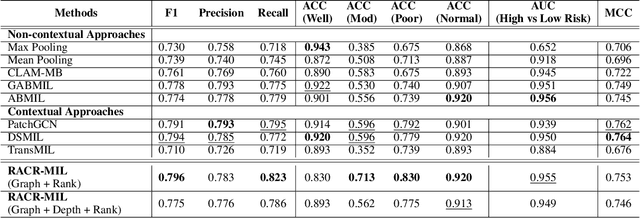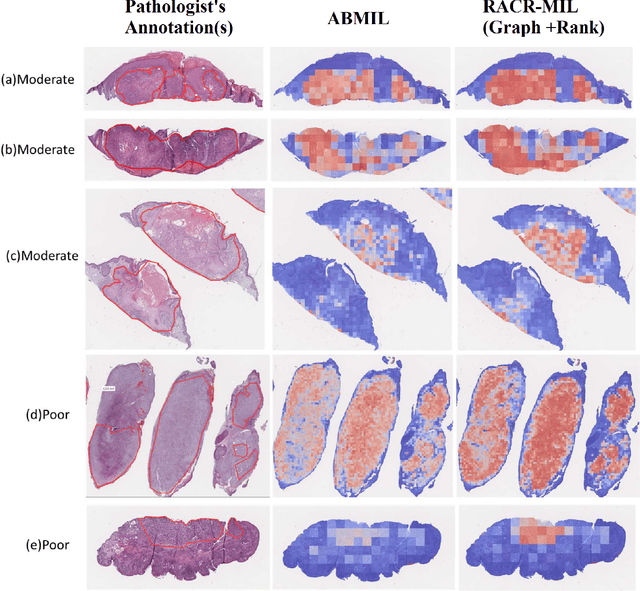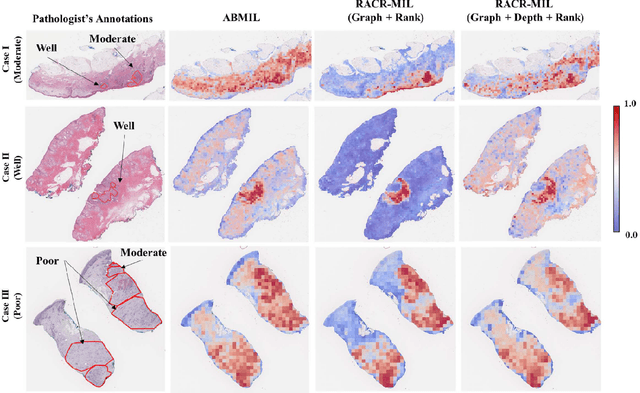Krishnakant Saboo
RACR-MIL: Weakly Supervised Skin Cancer Grading using Rank-Aware Contextual Reasoning on Whole Slide Images
Aug 29, 2023



Abstract:Cutaneous squamous cell cancer (cSCC) is the second most common skin cancer in the US. It is diagnosed by manual multi-class tumor grading using a tissue whole slide image (WSI), which is subjective and suffers from inter-pathologist variability. We propose an automated weakly-supervised grading approach for cSCC WSIs that is trained using WSI-level grade and does not require fine-grained tumor annotations. The proposed model, RACR-MIL, transforms each WSI into a bag of tiled patches and leverages attention-based multiple-instance learning to assign a WSI-level grade. We propose three key innovations to address general as well as cSCC-specific challenges in tumor grading. First, we leverage spatial and semantic proximity to define a WSI graph that encodes both local and non-local dependencies between tumor regions and leverage graph attention convolution to derive contextual patch features. Second, we introduce a novel ordinal ranking constraint on the patch attention network to ensure that higher-grade tumor regions are assigned higher attention. Third, we use tumor depth as an auxiliary task to improve grade classification in a multitask learning framework. RACR-MIL achieves 2-9% improvement in grade classification over existing weakly-supervised approaches on a dataset of 718 cSCC tissue images and localizes the tumor better. The model achieves 5-20% higher accuracy in difficult-to-classify high-risk grade classes and is robust to class imbalance.
Parallel and Distributed Approaches for Graph Based Semi-supervised Learning
Sep 04, 2015



Abstract:Two approaches for graph based semi-supervised learning are proposed. The firstapproach is based on iteration of an affine map. A key element of the affine map iteration is sparsematrix-vector multiplication, which has several very efficient parallel implementations. The secondapproach belongs to the class of Markov Chain Monte Carlo (MCMC) algorithms. It is based onsampling of nodes by performing a random walk on the graph. The latter approach is distributedby its nature and can be easily implemented on several processors or over the network. Boththeoretical and practical evaluations are provided. It is found that the nodes are classified intotheir class with very small error. The sampling algorithm's ability to track new incoming nodesand to classify them is also demonstrated.
 Add to Chrome
Add to Chrome Add to Firefox
Add to Firefox Add to Edge
Add to Edge